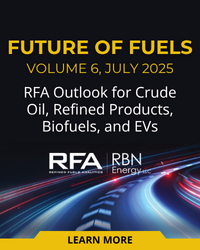It’s been more than two months since Russia invaded Ukraine, sending global energy markets into chaos as most of Europe tries to figure out a way to quickly reduce its reliance on Russian supplies. The initial response from the U.S. and its allies was a slate of economic sanctions, but those largely left natural gas out of the equation, as parts of Europe are so dependent on Russian gas that stopping the flows would pose serious threats to the continent’s economies and energy security. Now, with no sign of an end to military hostilities and continual increases in the scope of sanctions, Russia is responding by starting to shut off flows to European countries that refuse to pay for their gas in rubles. Where is this headed? In today’s RBN blog, we look at the latest escalation, what led to this point and where the market might go from here.
Even prior to Russia’s war on Ukraine, gas-related tensions between Russia and Europe were high. A perfect storm of high global demand, low storage inventories in Europe and record-high carbon prices had put sustained upward pressure on global gas prices. Last spring and summer, Russian gas exports to Europe were well below seasonal norms, Europe struggled to refill its depleted storage inventories, and LNG imports sagged as Asian and Latin American offtakers routinely outbid European offtakers for marginal cargoes. Russia’s lackluster gas exports led many in Europe to believe that Putin was deliberately holding back gas supply to pressure the European Union (EU) into a swift start-up of Nord Stream 2, which was completed last September but whose operation was awaiting final regulatory approvals.
In our recent blog, You Don’t Own Me, we provided a primer on the European gas market’s various sources. Broadly speaking, Russia provides about 40% of Europe’s total gas supply, but that’s not distributed evenly across the continent. In general, the total loss of gas from Russia to Europe would hurt, but the level of pain would range from having to deal with high energy prices in some places to extreme austerity measures to conserve gas in others. Highlighting this inter-regional discrepancy is the recent price separation between the UK’s National Balancing Point (NBP; blue line in Figure 1) and the Dutch Title Transfer Facility (TTF; yellow line). Historically, the two price markers traded relatively in line with each other, but over the past few weeks TTF has traded more than $7/MMBtu above NBP (black oval) as the UK has little-to-no reliance on Russian gas.
Join Backstage Pass to Read Full Article








